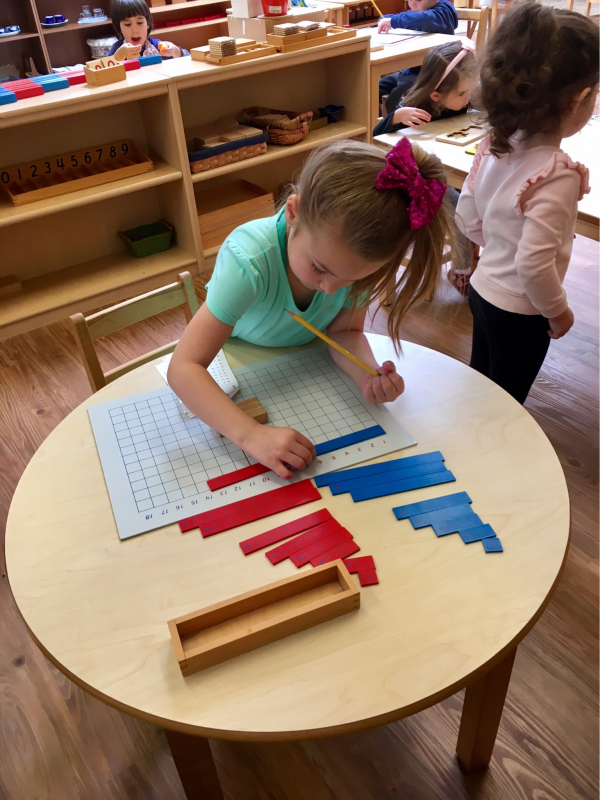Wisconsin Montessori Mathematics

"Children display a universal love of mathematics which is the science of precision, order and intelligence.” Dr. Maria Montessori
How often do we hear someone say, “I am no good at math?” So often, people think math is difficult because they just have not seen or understood the beauty, the order and the images of mathematics.
Every child is born with a mathematical mind. When a small baby bats at a mobile with his hands, the baby has to judge in which direction to bat; the baby has to judge the distance; and if the mobile is moving, the baby has to judge the speed in order to hit it. The baby will try with excitement many times over and over again to get it. When this same child is learning to walk, or pouring water, or figuring out the order of putting on his or her clothes, putting a puzzle together – all of these early tasks connect the neurons in the brain, creating mathematical pathways for the future.
“Mathematics should start with sense perceptions and be based on a knowledge of concrete objects.”
Dr. Maria Montessori
The very best way to really learn about numbers is to experience them. It is easy to teach a child to recite the numbers 1 to 30, but does that child understand what those numbers mean? In a Montessori school, young children know that the number 30 is the same as three 10’s. How do they know that? By using the Golden Beads!
Milwaukee Area Montessori Hands-On Approach to Mathematics
Thousand Cube Hundred Square Ten Unit 1 Unit
The beautiful Golden Beads - small glass golden beads that the children can hold, feel, and count. What was an abstract idea is now a physical, visual concrete material in which children can see that ten units is a ten; that ten tens go into a hundred; and that ten hundreds go into a thousand - they can especially see and feel the difference in size and weight between a single unit bead and a cube of one thousand beads.
Dr. Maria Montessori sequentially designed the mathematic materials to take the child from the concrete to the abstract.
At MorningStar Montessori Cedarburg, by exploring with our myriad math materials children discover and begin to understand the quantity, the symbols, and the sequence of numbers.
There is a logical progression in the areas of math, and a variety of materials to support each concept:
1. The Numbers 1 to 10
2. The Decimal System
3. Linear and Skip Counting 11 to 19; 1 to 1000
4. Exploration and Memorization of the tables:
(Addition, subtraction, multiplication, and division)
5. The “Passage to Abstraction”
6. Fractions
7. Geometry, Time, Money, and Measurement
After having been presented all of the Montessori Practical Life materials, and most of the Sensorial materials, children at approximately the age of 3 ½ will begin the math materials. As all of the materials in the Montessori environment, all math presentations are individual, designed for independent use and repetition
